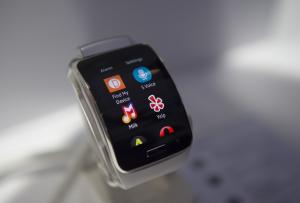MADISON, Wis., May 28 (UPI) — A team of researchers developed circuits that could dramatically improve and expand the use of wearable electronics.
The engineers at the University of Wisconsin-Madison say they have created the world’s fastest stretchable, integrated circuits that could further develop wearable electronics that monitor such things as vital signs, fitness and sun exposure, or non-medical uses such as playing music and charging other devices.
Led by Zhenqiang “Jack” Ma, the researchers published details of these circuits Friday in the journal Advanced Functional Materials.
“We’ve found a way to integrate high-frequency active transistors into a useful circuit that can be wireless,” said Ma, whose research was supported by the Air Force Office of Scientific Research. “This is a platform. This opens the door to lots of new capabilities.
Ma’s group has been developing transistor devices for the past decade, but this latest work joins high-frequency and flexible electronics.
Epidermal electronic systems — known as electronics that are placed on the skin like temporary tattoos — would allow health care staff to monitor patients remotely and wirelessly without the current cables and wires.
The researchers’ new stretchable integrated circuits are just 25 micrometers (or .025 millimeters) thick compared with current stretchable transmission lines of 640 micrometers (or .64 millimeters).
Manufacturers are seeking to improve the use of wearable electronics as the next wireless broadband technologies, referred to as 5G, emerge.
The 5G falls directly within the range of .3 gigahertz to 300 gigahertz.
The new, stretchable integrated circuits basically contain two intertwining power transmission lines in repeating S-curves. They are like twisted-pair telephone cables.
This method allows these transmission lines to stretch without affecting performance. And they are shielded from outside interference and don’t suffer a loss in current.

COMMENTS
Please let us know if you're having issues with commenting.